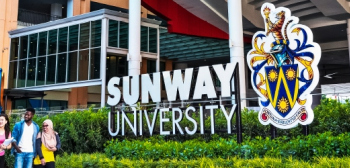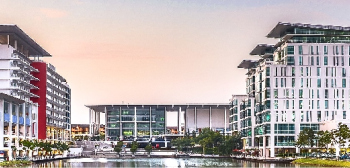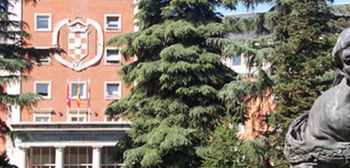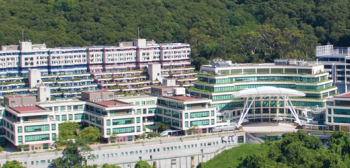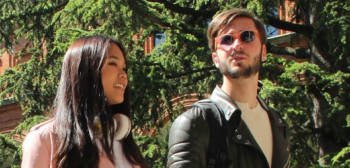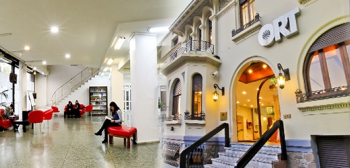- #=134 QS Global World Ranking
- PublicStatus
- Very HighResearch Output
- 22,026Total Students
- 2,324Faculty
- 10,237Int'l Students
QS Global World Ranking
The University’s position in the current QS World University Rankings.
The University’s position in the current QS World University Rankings.
Status
Whether the University is funded by the government of that country or state, or funded by private donations.
Whether the University is funded by the government of that country or state, or funded by private donations.
Research Output
The research intensity of the University, based on the number of papers output relative to the University’s size.
The research intensity of the University, based on the number of papers output relative to the University’s size.
Total Students
The number of full time equivalent students enrolled at the University.
The number of full time equivalent students enrolled at the University.
Faculty
The number of full time equivalent teaching staff employed by the University.
The number of full time equivalent teaching staff employed by the University.
Int'l Students
The number of full time equivalent international students enrolled at the University.
The number of full time equivalent international students enrolled at the University.
Universiti Sains Malaysia (USM)
About
Read more
Read less
Established as the second university in the country in 1969, University Sains Malaysia (USM) was first known as the University of Penang, before the University’s Act came into effect on 4th October 1971. The university has been developing and expanding since its inception, which started with the enrolment of 57 science based students. Now, USM offers courses at undergraduate and postgraduate levels to approximately 20,000 students. USM has also become a well-known university locally and internationally. Since its beginning, USM has implemented a school system, as opposed to the traditional faculty system. What is unique about this system is that each school could full fill the needs of a more focused degree in the chosen area of study and at the same time, students could have the opportunity to explore other areas of study offered by another school. The interdisciplinary approach ensures that USM, the first in the country to adopt this system, would produce trained, multi-skilled graduates. USM main campus is located within a tropical island of Penang, Malaysia. There are two USM branch campuses, one at Kubang Kerian in Kelantan known as Health Campus and the other at Nibong Tebal, known as Engineering Campus. The former houses the School of Medical Sciences, School of Health Sciences and School of Dental Sciences, while the latter houses the six Engineering Schools. To date, the total enrolment is more than 30,000 students.Right from the time of its establishment USM has adopted an innovative approach to higher education and of significance is its departure from the traditional faculty system of academic organisation. USM is a pioneering, transdisciplinary research intensive university that empowers future talents and enables the bottom billions to transform their socio-economic well-being. In its place, USM implements the broad-based School system where related subjects are grouped into schools of study and within each school, the policy combines subjects and to organise courses in such a manner that a degree of specialization in a chosen subject was possible. From the outset, USM was given the mandate to provide, promote, and develop higher education in the fields of Natural Sciences, Applied Sciences, Medical and Health Sciences, Pharmaceutical Sciences, Building Sciences & Technology, Social Sciences, Humanities, and Education, as well as to provide for research and advancement of knowledge and the dissemination of such knowledge in these fields of study As one of the four Higher Institutions of Learning recognised by the Ministry of Higher Education as a Research Intensive University, USM offers educational and research opportunities to both students and staff. One of the key elements in the development of academic excellence at USM is the establishment of its research centres and units. This is due to the fact that the University has always been aware of the need for both research and teaching to remain as receptive as possible to the demands of society, and that the centres and units would provide better opportunities for integration and networking.
About
Established as the second university in the country in 1969, University Sains Malaysia (USM) was first known as the University of Penang, before the University’s Act came into effect on 4th October 1971. The university has been developing and expanding since its inception, which started with the enrolment of 57 science based students. Now, USM offers courses at undergraduate and postgraduate levels to approximately 20,000 students. USM has also become a well-known university locally and internationally. Since its beginning, USM has implemented a school system, as opposed to the traditional faculty system. What is unique about this system is that each school could full fill the needs of a more focused degree in the chosen area of study and at the same time, students could have the opportunity to explore other areas of study offered by another school. The interdisciplinary approach ensures that USM, the first in the country to adopt this system, would produce trained, multi-skilled graduates. USM main campus is located within a tropical island of Penang, Malaysia. There are two USM branch campuses, one at Kubang Kerian in Kelantan known as Health Campus and the other at Nibong Tebal, known as Engineering Campus. The former houses the School of Medical Sciences, School of Health Sciences and School of Dental Sciences, while the latter houses the six Engineering Schools. To date, the total enrolment is more than 30,000 students.Right from the time of its establishment USM has adopted an innovative approach to higher education and of significance is its departure from the traditional faculty system of academic organisation. USM is a pioneering, transdisciplinary research intensive university that empowers future talents and enables the bottom billions to transform their socio-economic well-being. In its place, USM implements the broad-based School system where related subjects are grouped into schools of study and within each school, the policy combines subjects and to organise courses in such a manner that a degree of specialization in a chosen subject was possible. From the outset, USM was given the mandate to provide, promote, and develop higher education in the fields of Natural Sciences, Applied Sciences, Medical and Health Sciences, Pharmaceutical Sciences, Building Sciences & Technology, Social Sciences, Humanities, and Education, as well as to provide for research and advancement of knowledge and the dissemination of such knowledge in these fields of study As one of the four Higher Institutions of Learning recognised by the Ministry of Higher Education as a Research Intensive University, USM offers educational and research opportunities to both students and staff. One of the key elements in the development of academic excellence at USM is the establishment of its research centres and units. This is due to the fact that the University has always been aware of the need for both research and teaching to remain as receptive as possible to the demands of society, and that the centres and units would provide better opportunities for integration and networking.
Campus locations
Universiti Sains Malaysia (Engineering Campus),
Universiti Sains Malaysia , Nibong Tebal , Penang , Malaysia , 14300
Universiti Sains Malaysia (Health Campus),
Universiti Sains Malaysia , Kubang Kerian , Kelantan , Malaysia , 16150
Universiti Sains Malaysia (Main Campus),
Universiti Sains Malaysia , Gelugor , Penang , Malaysia , 11800
Similar Universities
The Education University of Hong Kong
10 Lo Ping Road, Tai Po, Hong Kong
Trinity College Dublin, The University of Dublin
College Green, Dublin
=108 QS World University RankingsUniversidad ORT Uruguay
Cuareim 1451, Montevideo
Related content

Top Universities in Malaysia
By
Laura
Bridgestock
Updated
1k
0
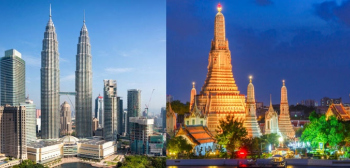
Should You Study in Malaysia…
By
Sabrina
Collier
Updated
1.7k
0

Top 10 Universities in Asia…
By
Sabrina
Collier
Updated
301
0

Top Universities for Hospita…
By
Craig
OCallaghan
Updated
48
0

Top Universities in Asia for…
By
Laura
Bridgestock
Updated
151
0

Top Universities in Asia for…
By
Laura
Bridgestock
Updated
92
0
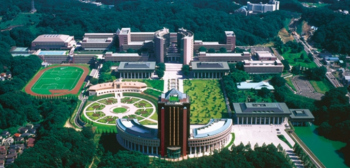
Top Universities in Asia for…
By
Craig
OCallaghan
Updated
218
0

Top 10 Universities in Asia…
By
Laura
Bridgestock
Updated
137
0

Top 10 Universities in Asia…
By
Laura
Bridgestock
Updated
60
0

Top 10 Universities in Asia…
By
Laura
Bridgestock
Updated
96
0
Test preparations
Featured University


Sponsored
438
QS World University Rankings
-
10 UG & 47 PGTotal courses
-
Private for ProfitStatus
-
HighResearch output
Universiti Sains Malaysia (USM)
EN

